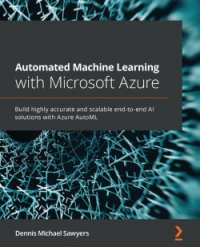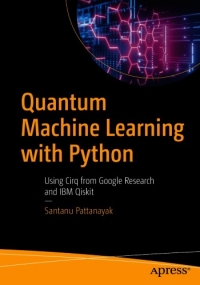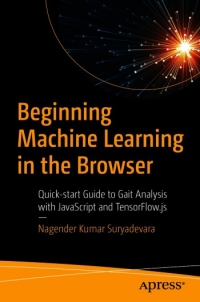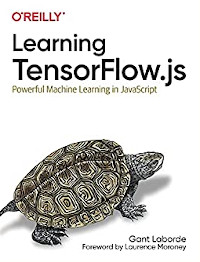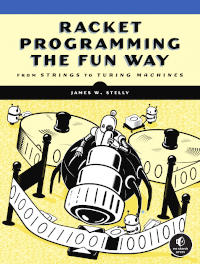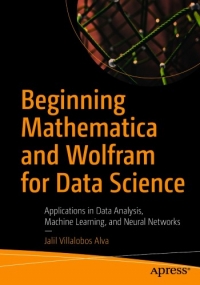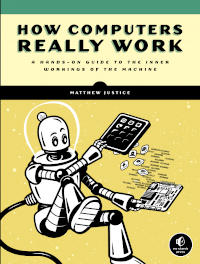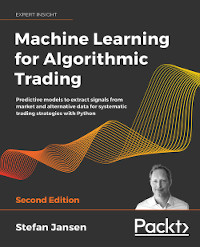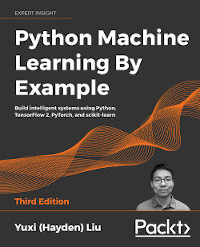Mac eBooks
Automated Machine Learning with Microsoft Azure
Automated Machine Learning with Microsoft Azure helps you to build high-performing, accurate machine learning models in record time. It allows anyone to easily harness the power of artificial intelligence and increase the productivity and profitability of your business. With a series of clicks on a guided user interface (GUI), novices and seasoned data scientists alike can train and deploy machine learning solutions to production with ease. This book will teach you how to use Azure AutoML with both the GUI as well as the AzureML Python software development kit (SDK) in a careful, step-by-step way. First, you'll learn how to prepare data, train models, and register them to your Azure Machine Learning workspace. You'll then discover how to take those models and use them to create both automated batch solutions using machine learning pipelines and real-time scoring solutions using Azure Kubernetes Service (AKS). Finally, you will be able to use AutoML on your own data to not only train ...
Automated Machine Learning with Microsoft Azure helps you to build high-performing, accurate machine learning models in record time. It allows anyone to easily harness the power of artificial intelligence and increase the productivity and profitability of your business. With a series of clicks on a guided user interface (GUI), novices and seasoned data scientists alike can train and deploy machine learning solutions to production with ease. This book will teach you how to use Azure AutoML with both the GUI as well as the AzureML Python software development kit (SDK) in a careful, step-by-step way. First, you'll learn how to prepare data, train models, and register them to your Azure Machine Learning workspace. You'll then discover how to take those models and use them to create both automated batch solutions using machine learning pipelines and real-time scoring solutions using Azure Kubernetes Service (AKS). Finally, you will be able to use AutoML on your own data to not only train ...
Quantum Machine Learning with Python
Quickly scale up to Quantum computing and Quantum machine learning foundations and related mathematics and expose them to different use cases that can be solved through Quantum based algorithms.This book explains Quantum Computing, which leverages the Quantum mechanical properties sub-atomic particles. It also examines Quantum machine learning, which can help solve some of the most challenging problems in forecasting, financial modeling, genomics, cybersecurity, supply chain logistics, cryptography among others. You'll start by reviewing the fundamental concepts of Quantum Computing, such as Dirac Notations, Qubits, and Bell state, followed by postulates and mathematical foundations of Quantum Computing. Once the foundation base is set, you'll delve deep into Quantum based algorithms including Quantum Fourier transform, phase estimation, and HHL (Harrow-Hassidim-Lloyd) among others. You'll then be introduced to Quantum machine learning and Quantum deep learning-based algorithms, ...
Quickly scale up to Quantum computing and Quantum machine learning foundations and related mathematics and expose them to different use cases that can be solved through Quantum based algorithms.This book explains Quantum Computing, which leverages the Quantum mechanical properties sub-atomic particles. It also examines Quantum machine learning, which can help solve some of the most challenging problems in forecasting, financial modeling, genomics, cybersecurity, supply chain logistics, cryptography among others. You'll start by reviewing the fundamental concepts of Quantum Computing, such as Dirac Notations, Qubits, and Bell state, followed by postulates and mathematical foundations of Quantum Computing. Once the foundation base is set, you'll delve deep into Quantum based algorithms including Quantum Fourier transform, phase estimation, and HHL (Harrow-Hassidim-Lloyd) among others. You'll then be introduced to Quantum machine learning and Quantum deep learning-based algorithms, ...
Beginning Machine Learning in the Browser
Apply Artificial Intelligence techniques in the browser or on resource constrained computing devices. Machine learning (ML) can be an intimidating subject until you know the essentials and for what applications it works. This book takes advantage of the intricacies of the ML processes by using a simple, flexible and portable programming language such as JavaScript to work with more approachable, fundamental coding ideas. Using JavaScript programming features along with standard libraries, you'll first learn to design and develop interactive graphics applications. Then move further into neural systems and human pose estimation strategies. For training and deploying your ML models in the browser, TensorFlow.js libraries will be emphasized. After conquering the fundamentals, you'll dig into the wilderness of ML. Employ the ML and Processing (P5) libraries for Human Gait analysis. Building up Gait recognition with themes, you'll come to understand a variety of ML implementation issu ...
Apply Artificial Intelligence techniques in the browser or on resource constrained computing devices. Machine learning (ML) can be an intimidating subject until you know the essentials and for what applications it works. This book takes advantage of the intricacies of the ML processes by using a simple, flexible and portable programming language such as JavaScript to work with more approachable, fundamental coding ideas. Using JavaScript programming features along with standard libraries, you'll first learn to design and develop interactive graphics applications. Then move further into neural systems and human pose estimation strategies. For training and deploying your ML models in the browser, TensorFlow.js libraries will be emphasized. After conquering the fundamentals, you'll dig into the wilderness of ML. Employ the ML and Processing (P5) libraries for Human Gait analysis. Building up Gait recognition with themes, you'll come to understand a variety of ML implementation issu ...
Learning TensorFlow.js
Given the demand for AI and the ubiquity of JavaScript, TensorFlow.js was inevitable. With this Google framework, seasoned AI veterans and web developers alike can help propel the future of AI-driven websites. In this guide, author Gant Laborde (Google Developer Expert in machine learningand the web) provides a hands-on end-to-end approach to TensorFlow.js fundamentals for a broad technical audience that includes data scientists, engineers, web developers, students, and researchers. You'll begin by working through some basic examples in TensorFlow.js before diving deeper into neural network architectures, DataFrames, TensorFlow Hub, model conversion, transfer learning, and more. Once you finish this book, you'll know how to build and deploy production-readydeep learning systems with TensorFlow.js. - Explore tensors, the most fundamental structure of machine learning; - Convert data into tensors and back with a real-world example; - Combine AI with the web using TensorFlow.js; ...
Given the demand for AI and the ubiquity of JavaScript, TensorFlow.js was inevitable. With this Google framework, seasoned AI veterans and web developers alike can help propel the future of AI-driven websites. In this guide, author Gant Laborde (Google Developer Expert in machine learningand the web) provides a hands-on end-to-end approach to TensorFlow.js fundamentals for a broad technical audience that includes data scientists, engineers, web developers, students, and researchers. You'll begin by working through some basic examples in TensorFlow.js before diving deeper into neural network architectures, DataFrames, TensorFlow Hub, model conversion, transfer learning, and more. Once you finish this book, you'll know how to build and deploy production-readydeep learning systems with TensorFlow.js. - Explore tensors, the most fundamental structure of machine learning; - Convert data into tensors and back with a real-world example; - Combine AI with the web using TensorFlow.js; ...
Racket Programming the Fun Way
At last, a lively guided tour through all the features, functions, and applications of the Racket programming language. You'll learn a variety of coding paradigms, including iterative, object oriented, and logic programming; create interactive graphics, draw diagrams, and solve puzzles as you explore Racket through fun computer science topics - from statistical analysis to search algorithms, the Turing machine, and more. Early chapters cover basic Racket concepts like data types, syntax, variables, strings, and formatted output. You'll learn how to perform math in Racket's rich numerical environment, and use programming constructs in different problem domains (like coding solutions to the Tower of Hanoi puzzle). Later, you'll play with plotting, grapple with graphics, and visualize data. Then, you'll escape the confines of the command line to produce animations, interactive games, and a card trick program that'll dazzle your friends. You'll learn how tot: - Use DrRacket, an inte ...
At last, a lively guided tour through all the features, functions, and applications of the Racket programming language. You'll learn a variety of coding paradigms, including iterative, object oriented, and logic programming; create interactive graphics, draw diagrams, and solve puzzles as you explore Racket through fun computer science topics - from statistical analysis to search algorithms, the Turing machine, and more. Early chapters cover basic Racket concepts like data types, syntax, variables, strings, and formatted output. You'll learn how to perform math in Racket's rich numerical environment, and use programming constructs in different problem domains (like coding solutions to the Tower of Hanoi puzzle). Later, you'll play with plotting, grapple with graphics, and visualize data. Then, you'll escape the confines of the command line to produce animations, interactive games, and a card trick program that'll dazzle your friends. You'll learn how tot: - Use DrRacket, an inte ...
Machine Learning for Kids
Artificial intelligence (AI) is the ability of computers to simulate human thinking. Machine learning (ML) is one of the building blocks of AI. It's based on the idea that computers can be taught to do things on their own from the data and feedback you give them. Machine Learning for Kids consists of this book and a kid-friendly companion website paired with the educational coding platform, Scratch. Together, they provide an easy-to-use guided programming environment for adding ML capabilities to your own AI projects! As you work through each chapter you'll discover how ML systems can be taught to recognize text, images, numbers, and sounds, and different ways of training ML models to improve their accuracy. You'll turn your models into fun computer games and apps (and see what happens when an AI system gets confused by bad data) while building: - A Rock, Paper, Scissors game that knows your hand shapes; - A smart question-answering chatbot; - A computer character that reacts ...
Artificial intelligence (AI) is the ability of computers to simulate human thinking. Machine learning (ML) is one of the building blocks of AI. It's based on the idea that computers can be taught to do things on their own from the data and feedback you give them. Machine Learning for Kids consists of this book and a kid-friendly companion website paired with the educational coding platform, Scratch. Together, they provide an easy-to-use guided programming environment for adding ML capabilities to your own AI projects! As you work through each chapter you'll discover how ML systems can be taught to recognize text, images, numbers, and sounds, and different ways of training ML models to improve their accuracy. You'll turn your models into fun computer games and apps (and see what happens when an AI system gets confused by bad data) while building: - A Rock, Paper, Scissors game that knows your hand shapes; - A smart question-answering chatbot; - A computer character that reacts ...
Patterns in the Machine
Discover how to apply software engineering patterns to develop more robust firmware faster than traditional embedded development approaches. In the authors' experience, traditional embedded software projects tend towards monolithic applications that are optimized for their target hardware platforms. This leads to software that is fragile in terms of extensibility and difficult to test without fully integrated software and hardware. Patterns in the Machine focuses on creating loosely coupled implementations that embrace both change and testability. This book illustrates how implementing continuous integration, automated unit testing, platform-independent code, and other best practices that are not typically implemented in the embedded systems world is not just feasible but also practical for today's embedded projects. After reading this book, you will have a better idea of how to structure your embedded software projects. You will recognize that while writing unit tests, creating ...
Discover how to apply software engineering patterns to develop more robust firmware faster than traditional embedded development approaches. In the authors' experience, traditional embedded software projects tend towards monolithic applications that are optimized for their target hardware platforms. This leads to software that is fragile in terms of extensibility and difficult to test without fully integrated software and hardware. Patterns in the Machine focuses on creating loosely coupled implementations that embrace both change and testability. This book illustrates how implementing continuous integration, automated unit testing, platform-independent code, and other best practices that are not typically implemented in the embedded systems world is not just feasible but also practical for today's embedded projects. After reading this book, you will have a better idea of how to structure your embedded software projects. You will recognize that while writing unit tests, creating ...
Beginning Mathematica and Wolfram for Data Science
Enhance your data science programming and analysis with the Wolfram programming language and Mathematica, an applied mathematical tools suite. The book will introduce you to the Wolfram programming language and its syntax, as well as the structure of Mathematica and its advantages and disadvantages. You'll see how to use the Wolfram language for data science from a theoretical and practical perspective. Learning this language makes your data science code better because it is very intuitive and comes with pre-existing functions that can provide a welcoming experience for those who use other programming languages. You'll cover how to use Mathematica where data management and mathematical computations are needed. Along the way you'll appreciate how Mathematica provides a complete integrated platform: it has a mixed syntax as a result of its symbolic and numerical calculations allowing it to carry out various processes without superfluous lines of code. You'll learn to use its noteb ...
Enhance your data science programming and analysis with the Wolfram programming language and Mathematica, an applied mathematical tools suite. The book will introduce you to the Wolfram programming language and its syntax, as well as the structure of Mathematica and its advantages and disadvantages. You'll see how to use the Wolfram language for data science from a theoretical and practical perspective. Learning this language makes your data science code better because it is very intuitive and comes with pre-existing functions that can provide a welcoming experience for those who use other programming languages. You'll cover how to use Mathematica where data management and mathematical computations are needed. Along the way you'll appreciate how Mathematica provides a complete integrated platform: it has a mixed syntax as a result of its symbolic and numerical calculations allowing it to carry out various processes without superfluous lines of code. You'll learn to use its noteb ...
How Computers Really Work
How Computers Really Work is a hands-on guide to the computing ecosystem: everything from circuits to memory and clock signals, machine code, programming languages, operating systems, and the internet. But you won't just read about these concepts, you'll test your knowledge with exercises, and practice what you learn with 41 optional hands-on projects. Build digital circuits, craft a guessing game, convert decimal numbers to binary, examine virtual memory usage, run your own web server, and more. Explore concepts like how to: - Think like a software engineer as you use data to describe a real world concept; - Use Ohm's and Kirchhoff's laws to analyze an electrical circuit; - Think like a computer as you practice binary addition and execute a program in your mind, step-by-step. The book's projects will have you translate your learning into action, as you: - Learn how to use a multimeter to measure resistance, current, and voltage; - Build a half adder to see how logical op ...
How Computers Really Work is a hands-on guide to the computing ecosystem: everything from circuits to memory and clock signals, machine code, programming languages, operating systems, and the internet. But you won't just read about these concepts, you'll test your knowledge with exercises, and practice what you learn with 41 optional hands-on projects. Build digital circuits, craft a guessing game, convert decimal numbers to binary, examine virtual memory usage, run your own web server, and more. Explore concepts like how to: - Think like a software engineer as you use data to describe a real world concept; - Use Ohm's and Kirchhoff's laws to analyze an electrical circuit; - Think like a computer as you practice binary addition and execute a program in your mind, step-by-step. The book's projects will have you translate your learning into action, as you: - Learn how to use a multimeter to measure resistance, current, and voltage; - Build a half adder to see how logical op ...
Machine Learning for Algorithmic Trading, 2nd Edition
The explosive growth of digital data has boosted the demand for expertise in trading strategies that use machine learning (ML). This thoroughly revised and expanded 2nd edition enables you to build and evaluate sophisticated supervised, unsupervised, and reinforcement learning models. This edition introduces end-to-end machine learning for the trading workflow, from the idea and feature engineering to model optimization, strategy design, and backtesting. It illustrates this workflow using examples that range from linear models and tree-based ensembles to deep-learning techniques from the cutting edge of the research frontier. This revised version shows how to work with market, fundamental, and alternative data, such as tick data, minute and daily bars, SEC filings, earnings call transcripts, financial news, or satellite images to generate tradeable signals. It illustrates how to engineer financial features or alpha factors that enable a machine learning model to predict returns f ...
The explosive growth of digital data has boosted the demand for expertise in trading strategies that use machine learning (ML). This thoroughly revised and expanded 2nd edition enables you to build and evaluate sophisticated supervised, unsupervised, and reinforcement learning models. This edition introduces end-to-end machine learning for the trading workflow, from the idea and feature engineering to model optimization, strategy design, and backtesting. It illustrates this workflow using examples that range from linear models and tree-based ensembles to deep-learning techniques from the cutting edge of the research frontier. This revised version shows how to work with market, fundamental, and alternative data, such as tick data, minute and daily bars, SEC filings, earnings call transcripts, financial news, or satellite images to generate tradeable signals. It illustrates how to engineer financial features or alpha factors that enable a machine learning model to predict returns f ...
Python Machine Learning By Example, 3rd Edition
Python Machine Learning By Example, 3rd Edition serves as a comprehensive gateway into the world of machine learning (ML). With six new chapters, on topics including movie recommendation engine development with Naïve Bayes, recognizing faces with support vector machine, predicting stock prices with artificial neural networks, categorizing images of clothing with convolutional neural networks, predicting with sequences using recurring neural networks, and leveraging reinforcement learning for making decisions, the book has been considerably updated for the latest enterprise requirements. At the same time, this book provides actionable insights on the key fundamentals of ML with Python programming. Hayden applies his expertise to demonstrate implementations of algorithms in Python, both from scratch and with libraries. Each chapter walks through an industry-adopted application. With the help of realistic examples, you will gain an understanding of the mechanics of ML techniques ...
Python Machine Learning By Example, 3rd Edition serves as a comprehensive gateway into the world of machine learning (ML). With six new chapters, on topics including movie recommendation engine development with Naïve Bayes, recognizing faces with support vector machine, predicting stock prices with artificial neural networks, categorizing images of clothing with convolutional neural networks, predicting with sequences using recurring neural networks, and leveraging reinforcement learning for making decisions, the book has been considerably updated for the latest enterprise requirements. At the same time, this book provides actionable insights on the key fundamentals of ML with Python programming. Hayden applies his expertise to demonstrate implementations of algorithms in Python, both from scratch and with libraries. Each chapter walks through an industry-adopted application. With the help of realistic examples, you will gain an understanding of the mechanics of ML techniques ...
